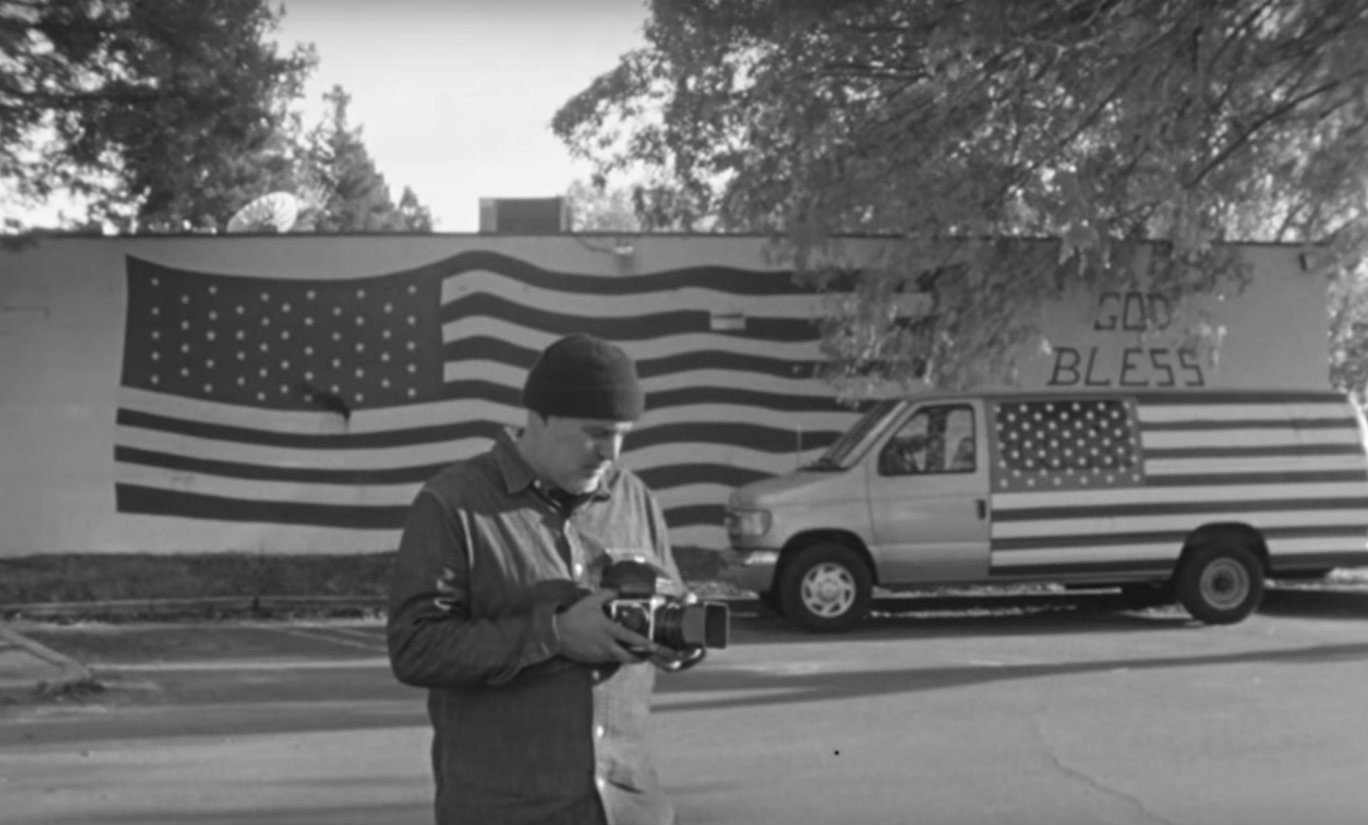The Second Skateboarding-And-Old-School-Camerawork Documentary From Exploredinary Is Here
ArtandSeek.net October 31, 2018 18Dallas-based Exploredinary – the artistic duo Sarah Reyes and Daniel Driensky, featured in Art & Seek’s Spotlight series – have created a new, three-part, short-documentary series called ‘Legends of Skateboarding.’ The first completed film wemt online two weeks ago, and the second one, ‘Skateboarding Is Our Religion,’ is online now (above). When the last one – from actor Jason Lee – goes public, Art & Seek will post that one as well.
Created in collaboration with Ilford Photo, a UK manufacturer of black and white film, ‘Legends of Skateboarding’ focuses on three celebrated skateboarders who also shoot film: Ray Barbee (professional skateboarder for nearly 30 years, musician, photographer), Joe Brook (staff photographer for ‘Thrasher Magazine’ for 20 years), and Lee (actor, photographer, former pro skater).
‘Skateboard Is Our Religion’ takes the series to San Francisco, an epicenter for thrashers (it’s the crazy hills, y’all – do NOT try these stunts). Says Brook of his years with Thrasher, skateboarding “took me from a very normal life that I could have lived into an extraordinary life that I never even imagined.”
Brook documents the cult-like enthusiasm of skateboarders with various photographic techniques for his work at ‘Thrasher’ – in this case with the subjects Ben Gore, GX1000, Max Schaaf and Corey Duffel.
Brook’s Q&A with Exploredinary is below.

Joe Brook and his van, Big Blue, on the streets of San Francisco in ‘Skateboarding Is Our Religion.’ Photo: Exploredinary
How did you initially get into photography?
Skateboarding is something I fell in love with as a teenager. Through skating I moved to California when I was 19 years old from Michigan. San Francisco is where we wanted to be because the city was like a skatepark with all the hills. Within that time, I met pro skaters and amateur skaters that I would see in magazines and videos, and I would also see the opposite end of that. I would see (photographers like) Bryce Kanights, Tobin Yelland, and videographers like Jake Rosenberg and Aaron Meza – and I was almost more enamored by those guys. I was like “WHOA. This is what you do for a living?! – you shoot photos and film?!” And I thought that was really cool.
I ended up hurting my back, and I couldn’t skateboard, and this girl that I was dating was like “You’re depressed!” And I was depressed, but I didn’t know what depression was. So she told me that I needed to do something with myself, take classes at a city college. So I took ceramics, photography, and they had cameras you could check out, and we would bulk load film, develop the film. But just seeing the photos come up was insane. I loved it, I thought it was the coolest thing. The learning process (f-stops and shutter speed) was like skateboarding, trying to learn a kick flip or a 360 flip on a skateboard except I’m trying to control light.
Eventually, you became a skateboarding photographer – how did that come about?
My friends were amateur skaters and pro skateboarders, and I was shooting a lot of photos with them, and when I got better equipment, I learned how to light things, and eventually started getting photos published. And then I was going on my first skateboarding trip.
My parents were like “What are you doing? You’re going to Europe for a month to photograph your friends skateboard??” And it was weird to tell people that is what I do, because people would say “Oh, you can make a living off of that?”
What are some of the sensibilities that differ between a skateboarding photographer and a commercial photographer?
It would be hard to get a commercial photographer to go shoot with one of the best skateboarders because the best skateboarder might only want to do the trick once. And a commercial photographer (or fashion photographer) will want 30 outtakes, and the skateboarder will be like, No, this is the one that you get. You gotta be mindful of that, these are humans, and they get tired and they get hurt, so you wanna be as focused as they are during a trick, and you have to be as good a photographer as they are as a skateboarder because the last thing you want to do is be like “I missed the shot” or “I blew it.”
During this trip, you’ve used so many different formats including a 4×5 camera. What is it about the 4×5 that you are drawn to?
The cameras that slow you down are the 4×5’s and the large format. When I shoot 35mm film, if I go to a city and walk around, I have to limit myself to how many rolls I bring. Because I’ll just keep shooting photos till I can’t shoot photos anymore. So with different formats like a 4×5 you get two shots to a film holder.
There’s something about the camera, you can change the perspectives with tilts and swings, and it just slows you down with the movements and focusing.
If you’re walking down the street and you hold your camera up to somebody, it’s kind of invasive. But with 4×5, you have a cloak over your head, and people are like “Whoa, what is this weirdo doing” or “Whoa! What kind of camera is that?”
So it’s more of a meditative camera for me. It’s slower, you’re really trying to pay attention to what you’re doing: the movements, the focus, the image is upside down, your brain is thinking differently. So it’s cool, it kind of takes you into a different world.










